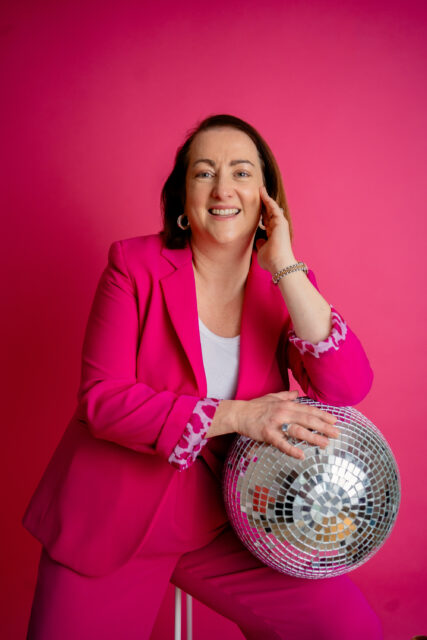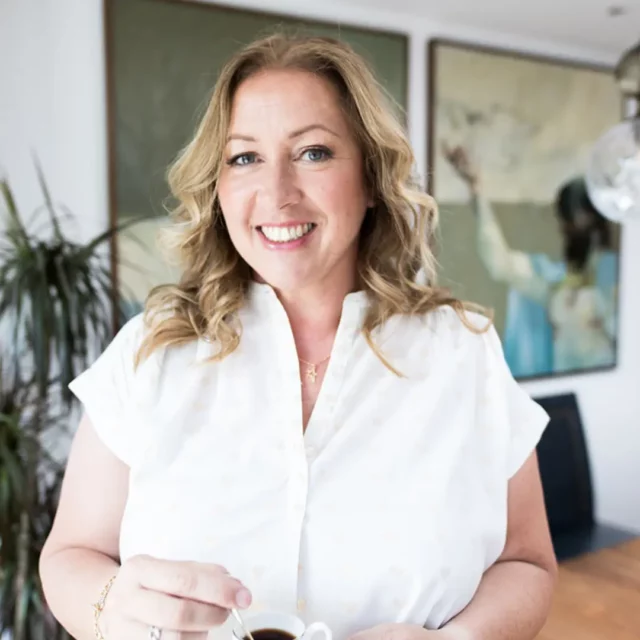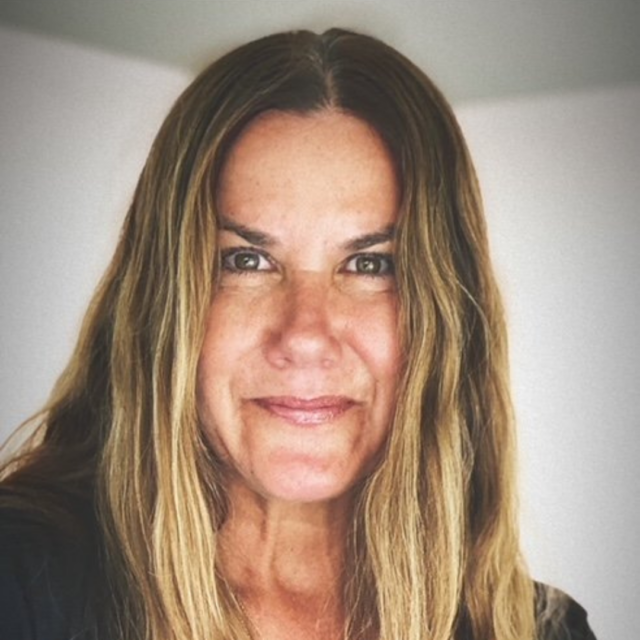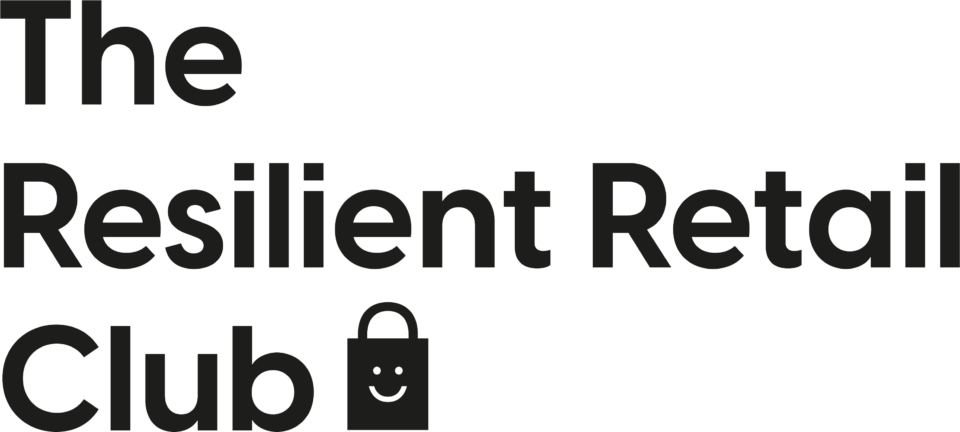What got your here won’t get you there with Catherine Erdly
[00:00:00] The hard truth about growth
Catherine Erdly: Today what I wanted to talk about is this notion of what got you here won’t get you there. And what that means in practice is having a look at the difference between growing a business to the point where you are making around six figures in revenue and then scaling the business or growing it further beyond that point.
Welcome to episode number 247 of the Resilient Retail Game Plan. Hi, I’m Catherine Eardly. I’m a small business and retail expert, as well as the founder of the Resilient Retail Club, which is my membership group, my one-to-one program, and done-for-you services, all for product businesses. You can find out more@resilientretailclub.com.
Welcome to the Resilient Retail Game Plan, a podcast for anyone wanting to start, grow, or scale a profitable creative product business. With me, Katherine Ley. The Resilient Retail Game Plan is a podcast dedicated to one thing, breaking down the concepts and tools that I’ve gathered from 20 years in the retail industry.
And showing you how you can use them in your business. This is the real nuts and bolts of running a successful product business broken down in an easy, accessible way. This is not a podcast about learning how to make your business look good. It’s the tools and techniques that will make you and your business feel good confidently.
Plan, launch, and manage your products and feel in control of your sales numbers and cash flow to help you build a resilient retail business.
[00:01:40] Why sales growth alone won’t solve everything
Catherine Erdly: There’s this general perception that what you really need to do with your business is you need to grow your sales and then effectively all of your issues will go away. But in reality, what I found over and over again is that there’s a certain set of skills and certain set of mindsets that get you to a certain point with your business, and then that switches and actually what you need to take you to the next level is something quite different.
And hitting that realization and understanding it and making that shift is profoundly transformational for business owners who might otherwise have been feeling really stuck.
So what that feeds into is this feeling of overwhelm or burnout, and if you want to know more about this topic, then I do invite you to come to my free talk. It’s happening on Wednesday, the 30th of April. You can find the details in the show notes. There will be a link there to sign up. And if you can’t make it live, of course there will be a replay. But I’m gonna be talking about how to scale your business to seven figures without burning out.
And what I’m gonna be doing is addressing what you need to do to put in place a system structure to help you get past that six figure phase without it just becoming unmanageable.
[00:02:54] The toughest part of product-based business growth
Catherine Erdly: But what I wanna talk about today is why this is a difficult transition and why it’s something that people often miss.
So I call this episode what got you here? Won’t get you there because I think it’s a really great summary of this flexion point, if you like. This idea that when you first start a business, it’s really all about getting to know your customer and creating a product that they actually really want creating or curating.
And I often say to people when I talk to people, potentially if they’re coming in for my one-to-one program, or we’re talking about that, or our stock doctor program, for example, or my membership group, the Resilient Retail Club. What I often say to people is, the hardest thing of all in business is to find a product that people really love and will pay you money for.
That, in my opinion, is the thing that’s toughest. And when you see people who are really stuck, like maybe they’re not even able to get past, single digit or four digit turnover, for example. Often when they’re really struggling, it’s because there’s something about the product that just isn’t really resonating.
There isn’t, there aren’t enough people who love it or the product itself isn’t really something that the customer really resonates with. And that’s usually what the issue is more than say, a lack of marketing skill or other skills in the business owner. If you are really stuck at the starting block, it’s usually to do with the product.
So one of the first things that you have to overcome as a product business owner and to grow to that four figure, five figure, eventually six figure turnover. It’s about really honing in on what does the customer want? Am I offering them something that they really love? And I don’t believe that you can get to six figures unless you’ve got a product that people do love or enough people are or a certain number of people are interested in and are looking to buy.
And again, whether that’s you creating it or whether that’s you curating it, I really think that’s the first most important step. And nothing, you can’t do anything with a business. Unless you’ve got to that point now. There’s lots that you can do even once you hit six figures to improve on that. But I would say usually that first piece, that first step on your journey to the first six figures is all about working out what do people really want from me?
How much are they willing to pay for it? What do I want to stand for as a brand? What does my brand identity, who am I serving? All of those kinds of things. That’s the first phase, and in order for you to do that and to get there. Often it’s about wearing all the hats being really relentlessly scrappy basically, for want of a better word, trying lots of different things, trying lots of different ideas, avenues, trying this type of marketing, trying this type of product, and just really basically giving it your all and pouring your heart and soul into it to just get that formula or at least understand like what do people want from me?
And so that is the first stage, and it requires you as the business owner to be pretty much in the detail all the time, looking at everything, trying to understand what’s going on, trying to understand what your customer wants from you, almost like obsessing over everything to get that to the point where you’ve found something that people want to buy from you and you are beginning to get some traction.
[00:06:12] How the skills that got you here can hold you back
Catherine Erdly: Now, what I often see happen, and the reason that it gets really tricky is that, as I said at the beginning, one of the perceptions is that once we have sales growth, then that’s basically going to solve all our problems. So o often people will come to me and they’ll say, I just need to get more sales. And of course there is always an element to which people do just need more sales. If you’ve got high overheads, if you don’t really have many sales at all, then yes, getting more sales is the most important thing. And obviously to grow from six figures to seven figures, you need to grow your sales alongside that. But actually, what I tend to find happens is that as people get to that six figure point and then they go above it, then all of those skills and things that they were doing as a starting founder become, they stop being a positive and they start becoming a negative.
[00:07:08] The “new level, new devil” concept in retail
Catherine Erdly: And there’s another phrase that I love, which is new level new devil. And I think that’s a really great example of what happens in that sort of six figure and above area, is that you’ve got to a point where you needing to make larger orders, the money that you’re spending goes up.
And the business itself is going to start getting a bit more complex usually because you’ve expanded your product range, you’ve expanded your number of sales channels, you’ve expanded to do the type of marketing that you’re doing. And just generally speaking, there’s more going on. And also if you’re getting to six figures, then if you were, for example, doing fulfillment yourself or customer services yourself, that may have been manageable when you were just having a handful of orders a week.
But as you grow and as those numbers go up. Then certain parts of the business start becoming a burden, effectively, a time burden. And even if you were able to manage it, as I said, when you just had a few orders a week, when you get to that point where you’ve got that consistent six figures and above, then they just start becoming some tasks that you could possibly manage before and you are finding it really hard to manage now.
So then what you find is the business owner becomes a bottleneck because if you’ve been really immersed in the business in every single element of the business and obsessing about every single element of the business as you go along, and that’s what helped you grow, and that’s what helped you get to that six figure level, then it’s quite hard to turn that off.
Especially if it’s something that has helped you grow and you’ve seen growth, and you’ve seen things work because you were so determined and so immersed in every single detail, it’s very hard to then say logically to yourself, okay, now I’m at this point. Now I need to stop doing that, and I need to start looking at ways to take myself out of the business.
It’s human nature is if we do something and it works well, we want to do more of it. And so what I find is that there is a point where people are six figures and above and they are just stuck because everything feels much heavier because the numbers are bigger, the investments are bigger, the bills going out each month are bigger, and they’re simultaneously trying to keep everything together themselves. So as a result, what you find is the level of stress for the founder starts going up and up, and their ability to step away from the business goes away or gets really difficult. And as a result, it can go from feeling like something that they built to give them freedom into something that all of a sudden feels like a job that you just can’t clock out of.
If you think about, again, going back to this idea of the skills, like what gets you to those six figures? So some of the skills that you need really to start off with is that being scrappy, having reactive decisions, really leaning into your gut feel. So trying to feel your way around okay, what are people reacting to? What do I wanna do next? Who is my customer? You need to be able to move really fast and just try lots of different things. And then I’m sure if you’re not already there, you probably know exactly what I’m talking about. But if you’re not quite there yet, I’m sure you can imagine that just becomes absolutely exhausting.
I also think as well there’s a certain level of adrenaline that we can run on as business owners. And when you first start out, it’s super exciting. So sometimes if you absolutely love what you do, and most of us absolutely love our businesses. Then you are willing to put that time in. And it may even be that it was something that was almost like a hobby or a passion project for you that you then turned into a business.
So when you first start out, it can feel like, okay, I’m doing this in the evenings or at weekends, and that’s okay. ’cause I love it and I absolutely enjoy it and I get so much out of it. And that can carry you, a year, two years, three years. It could carry you quite a long way in your business.
That just general excitement okay, this is amazing. I love it. I’m, I get so much out of it. I just love it when I see people buying my products and I love seeing them, wearing them or purchasing them for gifts. All the rest of it, it’s like super, super exciting, super energizing, and so we can get carried quite a long way on that kind of messy, reactive, putting everything into it, blood, sweat, and tears, all the rest of it, and then it can get to a point where.
[00:11:35] Burnout signals and the trap of doing it all
Catherine Erdly: If that continues. I honestly believe that there just becomes points where we just can’t take it for that long. Like maybe a year, maybe two years, but like three years, four years. And you’re still. Giving it all your all, you’re still not having proper boundaries around your time. You’re still not having weekends off properly or always working until midnight ’cause that’s how you fit everything in.
That just really starts to grate after a while. And I think especially if it’s coupled with not getting yourself as rewarded financially as you really should be for your. Efforts. It can mean that you end up thinking, what is my hourly rate? If I actually think about this? How much am I paying myself and how much?
How many hours am I putting in? And all of a sudden it can just start to feel like too much because, we all know that it’s really relentless customers. Some people have absolutely wonderful customers never have any issues. Most of us have mostly wonderful customers who we love, and a handful of people who can be really difficult.
And it can start to feel really difficult and really grating and just there’s this huge pressure on you all of the time.
[00:12:41] Defining your “there”—what success really looks like
Catherine Erdly: So what is the there that we’re trying to get to? So that’s what kind of got us here. We got us here by being scrappy, reactive, fast, maybe a little messy, but that was okay. Less boundaried more willing to put blood, sweat, and tears into it.
So what is that there that the there that we’re talking about? So again, coming back to this idea, if you’re at that six figures of growth you’ve got there, but you’ve really put your heart and soul into it. And one of the things that people really fear then is, okay, I know I want to grow my revenue.
I know I want to, I. Get to that point where I’m at multi six figures, or if I’m already at multi six figures, maybe I wanna be at seven figures. Or if I’m at seven figures, I want to be at multi seven figures. So I want to grow the business. I want more of it. I want it to continue to grow to in. To continue to grow my presence, continue to grow my impact, the number of people that I can help, the number of people that I can make a difference to the world with my products and everything else.
But the fear is okay, if I had to work really hard to get to this point, then how am I going to then move forward and make the next leap? And people talk to me a lot about things like I know where I want to go, but I don’t really know the roadmap to get there. So I know I’m here, I know I want to be there, but I dunno what’s in between.
And what does there look like? Sometimes it’s about a revenue number. People have a revenue number in mind, but often, a lot of the time people want to just feel a little bit more in control. They want to feel like. I really feel like a proper business owner. Like I know my numbers, I know that I know what my bank account’s gonna look like.
I don’t have these unexpected expenses coming out and buy to me on the backside when I least expect it. They want to be able to pay themselves consistently. Often people come to me wanting to increase the amount of money that they pay themselves, and they also want a business that isn’t gonna fall apart if they take time out.
So I often. Say that I’ve worked with people where the real testament of success of the work that we did together was that they took a two week holiday in August and they were able to do that and the business kept going, and when they came back, they weren’t hugely behind and things had progressed forward.
Now that is a huge thing, and often when you hear people talking about business success, they don’t always talk about things like that. They might talk about getting investment or having a chain of stores or whatever it might be. But I think for a lot of people that I talk to, what real success looks like is consistent pay, increased pay, pay in line with the hours that they put in better boundaries, and really just living the life that they wanted to live when they created their business.
So having that flexibility, having a business that serves them and not the other way round, and also feeling like they know what to focus on, feeling like they’re not pulled in a million different directions.
So what kind of is the missing gap? So as I said, what got you here is not gonna be what gets you there.
And if that’s what we are defining as there. Now, you may have a different definition for there, but it would be interesting to know and I’d love to hear, do pop me a DM on Instagram and let me know what your there looks like. But for a lot of people it’s that next level of calm, confident, consistency.
Maybe not the most sexy sounding thing in the world, but for a lot of people, that’s what they’re really craving. They just want it to feel like they’re in control, feel like they’ve got things that they’re not spinning a million different plates. They’re not waiting for the next thing to happen to them, or the next bill to hit their bank account.
It’s not necessarily that they’re like, okay, I want to be the next big high street name, or maybe it is. And if that’s what your there is, then I completely support that as well. But just to say that we all have these different visions of success. And so what is the bridge between the two?
[00:16:30] Structure, support, and sanity: The real game-changers
Catherine Erdly: The bridge between the two. In my experience is going through a process of changing the way that you think about your business and the way that you think about your role within the business, and usually it involves structure and support. So I call it structure, support, and sanity, or structure and support leads to sanity, I should say.
So structure is you move from being reactive to being proactive. You know what your plan is for the year ahead. You know what you want to launch and when you know when your big peak times are and you have that zoomed out view where you’ve got a plan in place. And you can look at your marketing and your operational plan, your product launching plan, and it all ties together neatly.
It’s also about having structure around your stock purchasing. So understanding how much you need to buy, when, what you should be focusing on in terms of your stock so that you’re not just feeling like you are spending money just ’cause something looks low and you dunno whether or not that was the right thing to do.
’cause you’re not sure whether actually you should be replacing that, for example. It looks like understanding what support you need, understanding what jobs there are to do in the business, and I have a template for a retail business, which is really useful. Often when I work with people, we’re able to go through and say, okay, what are these roles and who’s doing them now?
And understand what supports the easiest for you to bring in the lowest risk, and what’s gonna work with your current cost structure so that you’re not overburdening yourself too quickly with overhead. Because that is one of those things that it’s easier said than done. If it was super easy to outsource things really quickly and get people doing the jobs really well and just all happening with no stress, then I think a lot more of us would do a lot more of it.
But it’s about working out what are the real pain points? How can I also manage my time to make myself more effective? But also how can I start building in this leadership time because. That’s the real difference I think between that first phase when you’re building the business. It’s about you really putting your all into it and you making things happen.
[00:18:47] Why leadership mindset matters more at scale
Catherine Erdly: And then as you get past that, the next stage of the bridge is about you starting to lead and letting other people make things happen. And as I said, it’s not something you can necessarily turn on and off really quickly. It’s something you have to put into place, piece by piece for your own peace of mind as well, so you don’t end up trying to do too many things at once.
So it’s all about then that clarity about having your stock plan, about having your sales calendar mapped out about having your strategy really clear. It’s not about you working harder, it’s about you working smarter, which I know is, can be a little bit of a cliche, but I do really think that is the truth of it. Because you just get to this point where you are just one person and one person cannot.
I would be love to know if anyone knows of a seven figure product business that is solely one person. I’m not sure how that would work. I guess maybe they exist some. If somebody’s a big influential content creator and all of their products are being printed on demand or something like that, sure, maybe there are those kind of seven figure businesses, but for most people it’s about taking yourself out of the day to day.
There’s a couple of reasons why taking yourself out is really important. Number one, because you need the headspace. There are many people in this world who can fulfill orders and deal with custom service queries in a way that is really brilliant. There are not that many people who have the creative vision and strategic vision to move your business forward, you are the person with that vision. You are the person who can lead the business to the next level. So you’ve gotta make sure that you don’t end up spending time on tasks that other people could do and free you up for that mental space.
And secondly, it’s just simply not practical. You get to the point where the number of hours needed to do some of these tasks in the business, they’re just too many. You can’t possibly do them all. So you have to start thinking about how to delegate and how to shift. But. It’s entirely natural that if you’ve been in a certain mindset for a certain amount of time, that you haven’t realized that what you need to do is shift mindset because you’re trying to replicate what’s worked for you before.
But as I said, it is understanding that is, there’s that flection point. Now, it’s not the same point for everybody. Sometimes it’s right around that vat limit. Sometimes it’s when people have built it to a, 200, 300,000 turnover. Some people, they get to this point when they get to, half a million or even a million, and you can also get to this point.
You can add some people in and then get a certain bit further and then need to reassess again. It’s not something that is completely linear. Probably the one thing we’ve all learned about building businesses is it’s not linear. There’s gonna be fits and starts. There’s gonna be times that you jump forward and times that you fall back and times that you have to recalibrate what you’re doing and really re really look again at what you’re doing and really understand is this still working for where I’m at in the business?
And I think it’s so you have to be so intentional when you build your business. You have to be really clear about what your vision is for the business, what you’re trying to build. And you have to be really clear about whether or not it’s working for you as a person, as a 360 degree person with other commitments in life, as well as being a business owner.
And I think it’s that process that I really love working with people on that. Where am I now? Where do I want to get to? Is it working for me? And then we put things in place, we move it forward, we see if that’s working. We make adjustments. ’cause as we all know, business is not static. It’s constantly evolving.
So if this resonates for you, if this sounds like something that you’d like to learn more about, then do tune into my free talk. I said I’ve got a talk all about how to scale to seven figures without overwhelm, without burning out. It is happening on Wednesday, the 30th of April. I’d love to have you join me.
[00:22:41] Join my free webinar: Scale To 7 Figures Without The Overwhelm
Catherine Erdly: Do take a look in the show notes for the link to sign up, and we’re gonna be delving even more into this topic and specifically what steps you do need to take, but. If anything else from this podcast episode, what I’d love you to take away is just this feeling that you’re not alone. If you are feeling like it’s all becoming overwhelming and you’re not feeling like you are running the business, you’re feeling like the business is running you, then it may well be that you’ve got to a point where what you’re doing needs to shift. It’s not about you, it’s just you’ve run out of your knowledge if you’ve got as far as you can with what you know, or you’re ready to make a shift into a different way of working. So hopefully that’s reassuring. It’s something that everyone goes through. All businesses that grow have these moments and these points of inflection where they have to look at things again and make decisions about how they’re doing it and what adjustments they want to make.
So it is not a sign of failure, it’s usually a sign of growth and opportunity.
So thank you so much for listening. If you’ve got a moment to unfollow the podcast, it makes a huge difference in getting the podcast out in front of more people. And of course, if you have a moment to review in Apple Podcasts, that will make a huge difference as well. You can also rate it within Spotify. Thanks again for tuning in, and I’ll see you next week.







